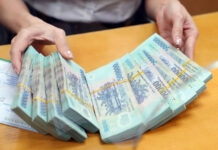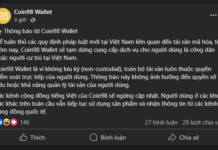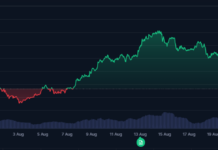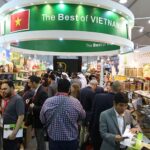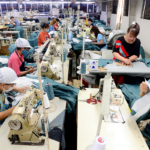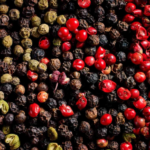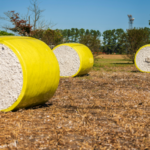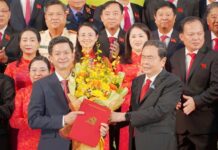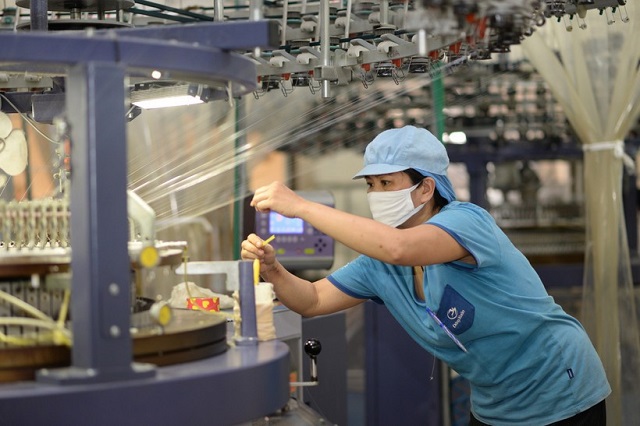
Vietnamese textile enterprises embrace green transformation, meeting the high standards of the global market. (Photo: PV/Vietnam+)
|
With the ambitious goal of reaching $47-48 billion in export turnover by 2025, Vietnam’s textile and garment industry faces significant challenges, including fierce competition, global political instability, and increasing demands for sustainability. Despite these hurdles, businesses remain resilient, striving to maintain growth in their operations.
Positive Signals Abound
Vietnam’s textile and garment industry made a strong impression in the first eight months of 2025, with export turnover estimated at $30.8 billion, a 7% increase compared to the same period in 2024. This growth is evident in key markets such as the U.S. (up 15%), the EU (up 15.1%), Japan (up 10.1%), and China (up 9.3%).
Mr. Truong Van Cam, Vice Chairman of the Vietnam Textile and Apparel Association (Vitas), expressed optimism: “With these positive results, we are confident that the industry’s export growth will continue in the coming months.”
Additionally, import turnover reached $16.8 billion, a 3.2% increase year-on-year. However, the industry’s heavy reliance on markets like China (59%) and the U.S. remains a vulnerability that needs addressing. This dependence underscores the need for supply chain autonomy to mitigate risks from geopolitical fluctuations.
The industry also faces significant pressure from new U.S. tariff policies. Mr. Pham Van Tan, Deputy General Director of Vietnam National Textile and Garment Group (Vinatex), noted that these policies have driven up retail prices in the U.S., potentially reducing demand for textile production.
“We must work hard to maximize production capacity and reduce costs to maintain competitiveness,” he stated.
Order trends among businesses show promising signs. At Viet Thang Corporation, General Director Nguyen Quang Minh reported that August 2025 revenue reached 101.7 billion VND, equivalent to 38.2% of the third-quarter plan, with pre-tax profit estimated at 6 billion VND. “For the first nine months, revenue is expected to reach 77.23% of the annual plan, and profit exceeds the plan by 108%,” Minh said, while acknowledging challenges in sustaining growth through year-end.
Similarly, Hanoi Textile and Garment Corporation (Hanosimex) saw positive signals in the fiber sector, with August orders at maximum capacity. General Director Nguyen Tri Son affirmed: “We are focusing on transactions to secure sufficient orders for the final months, ensuring stable production and income for workers.” Hanosimex’s garment sector also achieved high revenue, with August profits exceeding 5 billion VND, and orders for September, October, and November 2025 already covering 85-90% of the plan.
These figures and insights highlight the resilience of Vietnamese textile enterprises, while also reflecting the significant pressures from global market volatility.
Diverse Solutions in Action
To address challenges in the final four months of the year, Vietnamese textile businesses are implementing a range of solutions to stabilize production and move closer to their export targets. A key strategy is leveraging the advantages of 17 new-generation free trade agreements (FTAs) to diversify markets and customers.
Ms. Hoang Thuy Oanh, Deputy General Director of Hoa Tho Textile Garment Joint Stock Corporation, shared: “We are expanding cooperation opportunities with partners in Canada, Japan, South Korea, and Europe, while closely monitoring U.S. tariff policies to adjust our approach accordingly.”
In addition to market expansion, businesses are focusing on optimizing production costs. Mr. Ngo Thanh Phat, Executive Director of Viet Tien Garment Joint Stock Corporation, stated: “Despite a downward trend in orders for October and November 2025, we are actively seeking resources to ensure supply, stabilize production, and meet annual revenue and profit targets.”
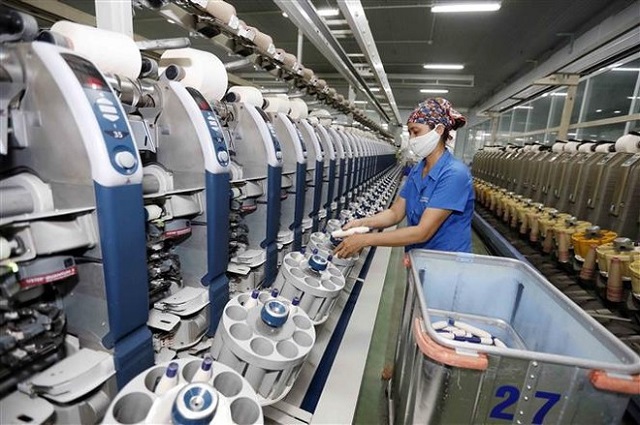
Fiber production for domestic and export markets. (Photo: Tran Viet/TXVN)
|
At Viet Thang, Mr. Nguyen Quang Minh emphasized restructuring the textile sector, optimizing labor and machinery, and enhancing marketing efforts to reduce inventory.
Another critical issue is addressing the shortage of raw materials and accessories—a major bottleneck for the industry in fully utilizing FTAs like the EVFTA.
Mr. Truong Van Cam proposed building large textile industrial zones to attract investment in fabric and dyeing as a fundamental solution. However, diversifying raw material suppliers is also a necessary short-term strategy, despite its vulnerability to market fluctuations.
Vitas representatives also called for support from Vietnamese trade offices abroad to provide accurate information on the supply capacity and quality of raw materials from international markets.
Furthermore, businesses are investing heavily in technology and human resources. Ms. Hoang Thuy Oanh noted that Hoa Tho Textile Garment Joint Stock Corporation is researching machinery investments, improving production processes, and training workers to enhance product quality. “We are also implementing better policies to care for the material and spiritual well-being of our workforce, retaining skilled labor,” she added.
These solutions not only address immediate challenges but also lay the foundation for the sustainable development of Vietnam’s textile industry. However, to fundamentally resolve the raw material shortage, strong government support is needed to create an attractive investment environment and build a complete supply chain from raw materials.
Vietnam’s textile industry stands at a critical juncture in 2025. To achieve continued export growth, businesses must navigate both external market pressures and internal limitations. Through steadfastness and innovation in strategies—from market expansion to production optimization—the industry can turn challenges into opportunities, solidifying its position on the global stage.
Hong Kieu
– 11:34 25/09/2025
Prime Minister Issues Directive to Boost Exports and Develop Overseas Markets
Prime Minister Pham Minh Chinh has signed Directive No. 29/CT-TTg dated September 23, 2025, outlining key tasks and solutions to boost exports and develop overseas markets.
Vinatex and Leading Garment Enterprises Unveil Q4 Strategic Plans
Despite mounting tariff pressures from the United States, Vietnam National Textile and Garment Group (Vinatex, UPCoM: VGT) and its subsidiaries are reporting positive signals: Viet Thang estimates a 9-month profit exceeding 8% of the annual plan, Hanosimex has secured 85-90% of orders until November, and Phong Phu and Hoa Tho are expanding their international market presence.
Vietnam Poised for 7% Annual Growth from 2026 to 2045, Says UOB’s Suan Teck Kin
In the period from 2026 to 2045, an average annual growth rate of approximately 7% is entirely achievable for Vietnam. This vision can become a reality if the current policies of reform and openness, coupled with robust investment and trade initiatives, continue to be vigorously promoted and effectively implemented.






